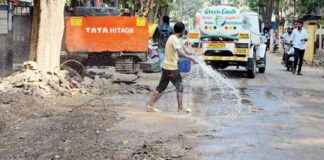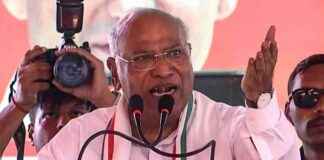Many Health Sub-Centres in Rural India Lack Buildings: Report
A recent government report has shed light on the concerning lack of buildings for many health sub-centres in rural India. The report, titled ‘Health Dynamics of India (Infrastructure and Human Resources) 2022-23’, highlights the fact that a significant number of these crucial health facilities operate from rented buildings or spaces provided by local village panchayats or voluntary societies. This revelation underscores the urgent need for improved infrastructure to support the primary healthcare system in rural areas.
The report, formerly known as ‘Rural Health Statistics’, was released by Union Health Secretary Apurva Chandra, who emphasized the importance of integrating the Health Management Information System (HMIS) portal with other health ministry portals to ensure timely and accurate data analysis. With a total of 169,000 sub-centres, 31,882 primary health centres (PHCs), 6,359 community health centres (CHCs), and various other healthcare facilities serving both rural and urban populations, the report serves as a valuable source of information for policy-making and resource allocation.
Chandra highlighted the role of the annual publication in providing comprehensive data on health infrastructure and human resources since 1992. He emphasized that the document offers valuable insights into manpower and infrastructure within the National Health Mission (NHM), aiding in policy formulation and targeted interventions. By analyzing data from different states, the report enables stakeholders to identify gaps and prioritize areas for improvement across the healthcare sector.
Substandard Infrastructure Hindering Healthcare Delivery
The lack of proper buildings for health sub-centres in rural India poses a significant challenge to healthcare delivery in these areas. Without adequate infrastructure, healthcare workers face numerous obstacles in providing essential services to the community. Operating from rented buildings or temporary spaces can compromise the quality of care and limit the scope of services that can be offered to patients.
In many cases, the absence of a dedicated building for sub-centres hampers the establishment of a permanent presence in the community, leading to difficulties in building trust and rapport with residents. Additionally, inadequate infrastructure can impact the ability to store medical supplies, maintain hygiene standards, and ensure privacy for patients seeking healthcare services.
The government report’s findings underscore the urgent need for investment in healthcare infrastructure in rural India to address these critical gaps. By providing sub-centres with proper buildings and facilities, the government can improve access to healthcare services, enhance the quality of care, and strengthen the primary healthcare system in rural areas.
Challenges Faced by Health Workers in Sub-Centres
Health workers operating in sub-centres without proper buildings face numerous challenges in delivering healthcare services to the community. The lack of a dedicated space can limit their ability to provide comprehensive care and may hinder their efforts to reach out to vulnerable populations. Without adequate infrastructure, health workers may struggle to maintain essential medical equipment, conduct necessary procedures, and ensure a safe and hygienic environment for patients.
Moreover, operating from rented buildings or temporary spaces can impact the morale and motivation of health workers, who may feel undervalued and unsupported in their roles. The absence of a suitable work environment can lead to burnout, stress, and job dissatisfaction among healthcare providers, ultimately affecting the quality of care they are able to deliver to patients.
In light of these challenges, it is essential for policymakers to prioritize the provision of proper buildings for health sub-centres in rural India. By investing in infrastructure that supports the needs of healthcare workers, the government can enhance the effectiveness and efficiency of healthcare delivery in these underserved areas.
Efforts to Improve Health Infrastructure in Rural India
Recognizing the critical importance of adequate infrastructure for healthcare delivery, the government has initiated various efforts to improve health facilities in rural India. Through schemes such as the National Health Mission (NHM) and the Ayushman Bharat program, the government aims to strengthen the primary healthcare system, enhance access to quality services, and address gaps in healthcare infrastructure.
One key focus area is the development of infrastructure for health sub-centres, which serve as the first point of contact between the community and the healthcare system. By providing these facilities with proper buildings, equipment, and resources, the government can ensure that essential healthcare services are available to all residents, especially in remote and underserved areas.
In addition to infrastructure development, the government is also investing in training programs for healthcare workers to enhance their skills and capabilities. By equipping health workers with the necessary knowledge and expertise, the government aims to improve the quality of care provided at sub-centres and other healthcare facilities, ultimately benefiting the health outcomes of the population.
Subheadings:
Challenges of Operating from Rented Buildings
Impact on Healthcare Delivery and Patient Outcomes
Government Initiatives to Improve Health Infrastructure
Conclusion
The lack of buildings for health sub-centres in rural India presents a significant obstacle to the effective delivery of healthcare services in these areas. Without proper infrastructure, health workers face numerous challenges in providing quality care to the community, impacting patient outcomes and overall health system performance.
To address these critical gaps, it is essential for the government to prioritize investments in healthcare infrastructure and provide sub-centres with the necessary buildings and facilities to support their operations. By improving access to quality healthcare services in rural areas, the government can enhance the health and well-being of the population, reduce health disparities, and strengthen the primary healthcare system as a whole.
Through a comprehensive approach that includes infrastructure development, training programs, and policy interventions, the government can ensure that health sub-centres in rural India are equipped to meet the healthcare needs of the community effectively. By investing in the health infrastructure of rural areas, the government can make significant strides towards achieving universal health coverage and improving health outcomes for all.




















